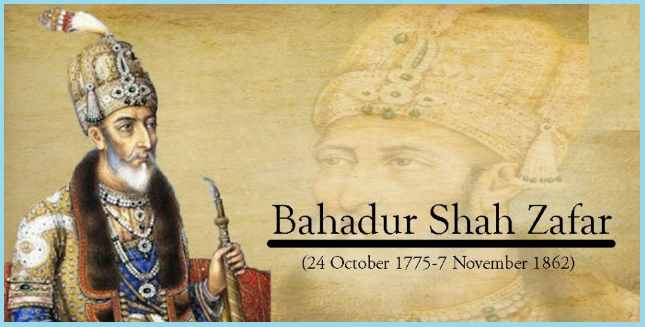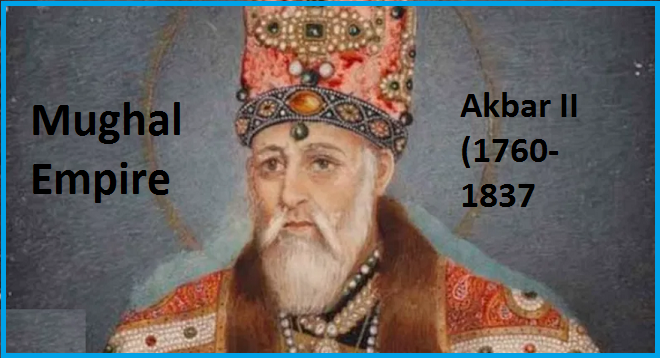Babur: The Founder of the Mughal Empire
Name History Babur, whose real name is Zahir-ud-din Muhammad, was born in the modern-day Uzbek city of Andijan on February 14, 1483.

Name Background
Zahir-ud-din Muhammad, better known as Babur, was born on February 14, 1483, in the city of Andijan, located in present-day Uzbekistan. Babur was a descendant of two of history’s most formidable conquerors: on his father’s side, he was a direct descendant of Timur (Tamerlane), the Central Asian conqueror, and on his mother’s side, he traced his lineage to Genghis Khan, the legendary Mongol ruler.
The name “Babur,” meaning “tiger” in Persian, symbolized his courageous and fierce character as a leader.
Ruler of Central Asia
Babur’s ambition to carve out an empire started early in life, but he first had to deal with the complex and unstable political environment of Central Asia. After the death of his father, Umar Sheikh Mirza, in 1494, Babur inherited the small but strategically important kingdom of Fergana, situated in the Ferghana Valley of modern-day Uzbekistan. Despite its size, Fergana held significance due to its central location, which made it a point of interest for rival rulers and factions.
As Ruler of Fergana
At the tender age of 12, Babur ascended to the throne of Fergana after his father’s sudden death in a tragic accident. His early years as ruler were marked by struggles to retain control over his kingdom, surrounded as it was by hostile factions and more powerful kingdoms. One of Babur’s first major ambitions was to capture Samarkand, the famed capital of his ancestor Timur. Despite several attempts, including a brief victory in 1497, he failed to retain control over Samarkan d, losing it to the Uzbeks under the leadership of Muhammad Shaybani Khan.
At Kabul
After failing to consolidate his position in Central Asia, Babur turned his eyes toward the south. In 1504, he successfully captured Kabul, the capital of modern-day Afghanis tan, from the local Arghun dynasty. Kabul provided him with a secure base of operations, and over the next two decades, he consolidated his rule over the region, forging alliances, organizing his military, and looking for opportunities to expand his empire. The conquest of Kabul was pivotal, as it gave Babur the resources and stability needed to plan further campaigns into India.
International Relations

Babur was a practical king who recognized the value of international relationships. Babur’s political approach heavily relied on his ties with the Safavid Empire of Persia.
In particular, he sought the support of Shah Ismail I, the founder of the Safavid dynasty, to counterbalance the threat posed by the Uzbeks. Babur adopted the Shi’a Safavid title of “Padishah” to gain Ismail’s backing in his quest for dominance over Central Asia and India.
This alliance provided Babur with essential military and diplomatic advantages.
Formation of the Mughal Empire
Babur was destined to travel to the northern Indian plains in 1526.
An important turning point in Indian history was Babur’s military expedition against the Delhi Sultanate, which was headed by Ibrahim Lodi of the Lodi family.
Babur had a relatively small but highly disciplined and mobile army, bolstered by advanced military techniques like the use of field artillery. On April 21, 1526, Babur decisively defeated Ibrahim Lodi at the Battle of Panipat, marking the beginning of the Mughal Empire in India.
The Initial Conflict of Panipat
Was a turning point in Babur’s life as well as a significant occasion in the Indian subcontinent’s history?
Despite being vastly outnumbered by the forces of Ibrahim Lodi, Babur’s military strategy and use of cannons gave him the upper hand. Lodi’s army was heavily reliant on traditional warfare techniques, while Babur’s innovative use of mobile cavalry and artillery shattered the opposition.
Babur’s conquest established the Mughal Empire and strengthened his hold on northern India by enabling him to seize control of Delhi and Agra.
Battle of Khanwa
Following his victory at Panipat, Babur faced a new challenge from Rana Sanga of Mewar, one of the most powerful Rajput kings of the time. Rana Sanga was determined to expel Babur from India and rallied a large force to challenge him. The two armies met at the Battle of Khanwa on March 16, 1527. Babur once again relied on his superior military tactics, including the use of cannons and a defensive position fortified with trenches.
The Rajput forces were decisively defeated, allowing Babur to strengthen his control over northern India.
Battle of Chanderi
The Battle of Chanderi in 1528 was another significant military engagement for Babur. Medini Rai, a Rajput chief and ally of Rana Sanga, held the fortress of Chanderi in Malwa. Babur, seeking to eliminate the remaining Rajput opposition, laid siege to the fortress. After a fierce battle, Medini Rai and his forces were defeated. With the fall of Chanderi, Babur had effectively crushed the Rajput resistance, further solidifying his empire in India.
Religious Policy
Babur, despite being a devout Muslim, was known for his tolerance toward other religions, a policy that would become one of the hallmarks of the Mughal Empire.Despite coming into conflict with multiple Hindu monarchs during his conquest of India, he nevertheless revered Hindu temples and the religious practices of his subjects. Babur’s Sufi views, which prioritized individualized piety and the value of spiritual activities over strict devotion to doctrinal orthodoxy, influenced his approach on religion.
Personal Life and Relationships
Babur’s personal life was filled with both triumph and tragedy. He had multiple wives and concubines, as was customary for royalty at the time, and he formed strong emotional bonds with some of them. His love for Bibi Mubarika, one of his wives, was well-known. Babur was also deeply attached to his children, particularly his eldest son, Humayun, who would go on to succeed him as emperor. However, his life was not without its struggles, and he often expressed his personal hardships and disappointments in his memoirs.
Poetry
In addition to being a warrior and ruler, Babur was a gifted poet. He wrote in both Persian and his native Chaghatai Turkic. Like his prose, his poetry was very reflective and frequently conveyed his thoughts on life and nature, his experiences on the battlefield, and his love for his native country. Though less well-known than his memoirs, his poetry reveals a creative and compassionate side to a man who is more commonly renowned for his military skill.
Family
Babur’s lineage was essential to the Mughal Empire’s survival. Humayun, his son, succeeded him as emperor, but before he eventually came back to power, Humayun’s reign was characterized by instability and exile. Shah Jahan, Aurangzeb, Jahangir, and Akbar were among Babur’s descendants who would go on to establish one of the most powerful and culturally varied empires in global history. The Mughals ruled over India for three centuries, having a significant impact on its politics, architecture, and culture.
Issue
Babur had several children, but his most notable issue was his eldest son, Humayun. Babur’s relationship with Humayun was complex; while he admired his son’s courage, he was also concerned about Humayun’s tendency to be indecisive. Nevertheless, Babur’s trust in Humayun was evident when he designated him as his successor. Babur’s other children, including Kamran Mirza and Askari Mirza, also played roles in the Mughal Empire, though their rivalry with Humayun caused significant internal strife after Babur’s death.
Death and Legacy
Babur died on December 26, 1530, in Agra. There are numerous stories surrounding his death, one of the most famous being that he offered his life in exchange for his gravely ill son Humayun’s recovery, a wish he supposedly made in front of God. Whether or not this tale is true, it reflects the deep bond he had with his children. Babur was initially buried in Agra, but his remains were later moved to Kabul, the city he cherished the most during his lifetime.
Babur’s legacy is profound.
As the founder of the Mughal Empire, he laid the groundwork for one of the most powerful and influential dynasties in world history. His descendants expanded and consolidated the empire, contributing to a rich cultural and architectural heritage, with monuments like the Taj Mahal standing as a testament to the Mughal era’s grandeur. His personal memoirs, the Baburnama, offer a candid and detailed account of his life, wars, and thoughts, making it one of the most important autobiographies in world history.
Babri Masjid

The Babri Masjid, a mosque constructed by one of Babur’s generals, Mir Baqi, in 1528 in Ayodhya, became a focal point of political and religious controversy centuries after Babur’s reign. In the late 20th century, the mosque became the subject of a dispute between Hindus and Muslims, with Hindus claiming it stood on the birthplace of Lord Ram. The mosque’s demolition in 1992 led to widespread communal riots and significantly impacted the political landscape of India. Although Babur himself had no direct involvement with the mosque beyond its construction, the Babri Masjid became inextricably linked with his legacy in modern Indian history.
Babur’s life and legacy are marked by his versatility as a ruler, warrior, poet, and founder of an empire. His achievements in India changed the course of the sub
Sons:
Humayun

Humayun was Babur’s eldest son and his successor. After Babur’s death, Humayun became the second Mughal emperor, ruling from 1530 to 1540, and again from 1555 to 1556.
Kamran Mirza

Kamran Mirza was Babur’s second son. He ruled over Kabul and Lahore, but he frequently came into conflict with his brother Humayun over the throne.
Askari Mirza

Askari Mirza, another son of Babur, was involved in the administration of the Mughal Empire. Like Kamran, he also had disputes with Humayun.
Hindal Mirza

Hindal Mirza was Babur’s youngest son. Unlike his brothers, he remained loyal to Humayun and served him with dedication during his reign.
Daughters:
Gulbadan Begum
Gulbadan Begum is one of Babur’s most well-known daughters. She is famous for writing Humayun-nama, a memoir that offers valuable insights into the Mughal court and the life of her brother Humayun.
Fakhr-un-Nissa Begum
Fakhr-un-Nissa Begum was another of Babur’s daughters, though less information is available about her compared to Gulbadan.
Aisan Daulat Begum
Though not much is recorded about her, Aisan Daulat Begum is mentioned in historical records as one of Babur’s daughters.
Best iPhone 15 Pro & Pro Max Deals – Flipkart Big Billion Days 2024











